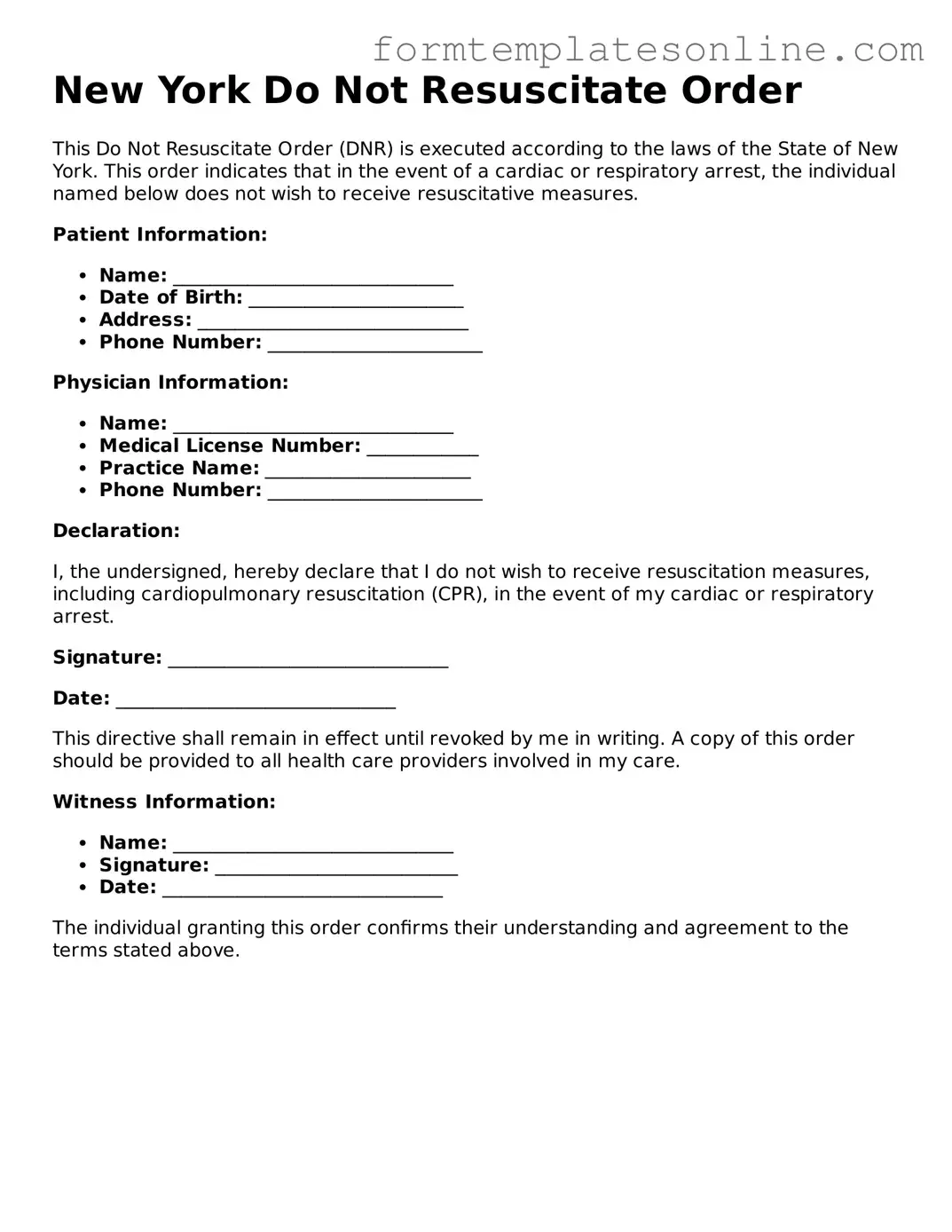What is a Do Not Resuscitate (DNR) Order in New York?
A Do Not Resuscitate Order is a legal document that allows individuals to refuse resuscitation efforts in the event of cardiac or respiratory arrest. In New York, this order must be signed by a physician and is intended to communicate a patient's wishes regarding emergency medical treatment.
Who can request a DNR Order?
Any adult who is capable of making their own medical decisions can request a DNR Order. Additionally, a parent or legal guardian can request a DNR for a minor child. It is essential that the individual understands the implications of the order before signing.
How is a DNR Order created in New York?
To create a DNR Order, a patient must discuss their wishes with their physician. If the physician agrees that a DNR is appropriate, they will complete the official DNR form, which must be signed by both the physician and the patient (or their representative).
Where should I keep my DNR Order?
The DNR Order should be kept in a place that is easily accessible, such as a medical file or on the refrigerator door. It is also advisable to provide copies to family members, caregivers, and any healthcare providers involved in the individual's care.
Can a DNR Order be revoked?
Yes, a DNR Order can be revoked at any time. The individual who created the order can verbally express their desire to revoke it, or they can destroy the written document. It is important to inform healthcare providers of the revocation immediately.
What happens if a DNR Order is not followed?
If a DNR Order is not followed, it may lead to legal complications for the healthcare providers involved. Medical personnel are required to respect the wishes outlined in a valid DNR Order, and failure to do so can result in legal liability.
Are there any specific requirements for the DNR Order form?
The DNR Order form must be completed and signed by a physician. It must include the patient's name, date of birth, and the physician's signature along with their medical license number. Additionally, it must clearly state the patient's wishes regarding resuscitation.
Does a DNR Order apply to all medical situations?
No, a DNR Order specifically applies to situations involving cardiac or respiratory arrest. It does not prevent other forms of medical treatment or interventions that may be necessary for the patient's care.
Can a DNR Order be used in a hospital setting?
Yes, a DNR Order is valid in both hospital and out-of-hospital settings. However, it is crucial for the healthcare team to be aware of the order to ensure that the patient's wishes are respected during their care.
What should I discuss with my doctor before completing a DNR Order?
Before completing a DNR Order, it is important to discuss your overall health, prognosis, and personal values with your doctor. This conversation can help clarify your wishes and ensure that the DNR Order accurately reflects your desires regarding end-of-life care.
